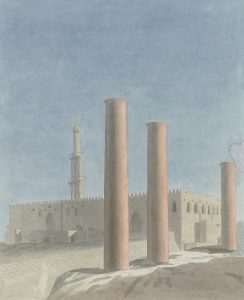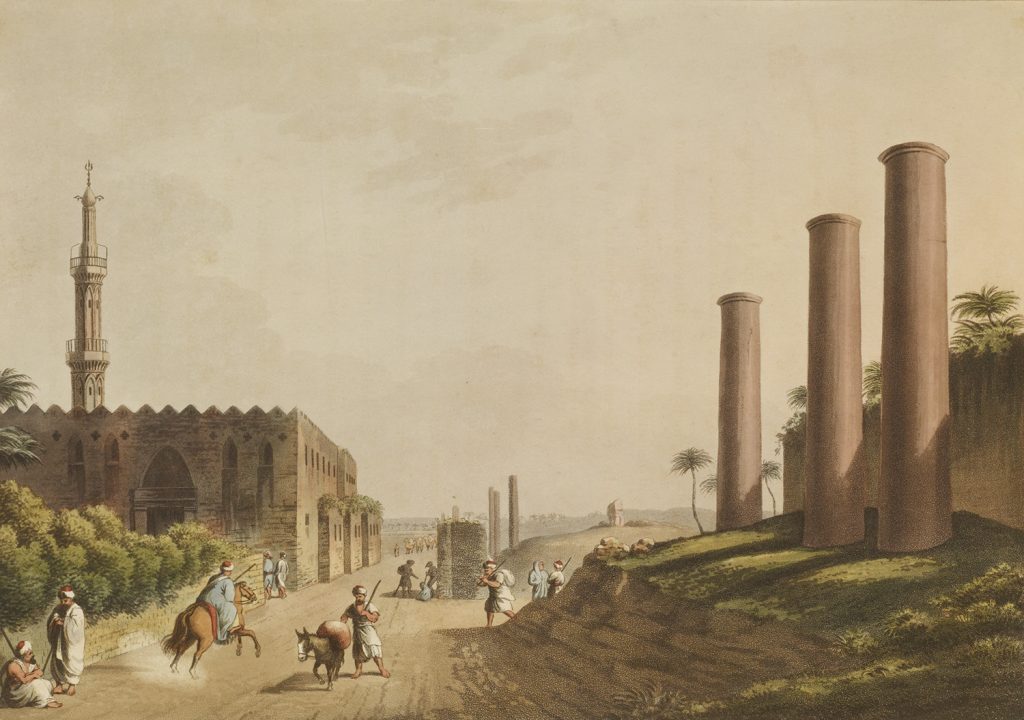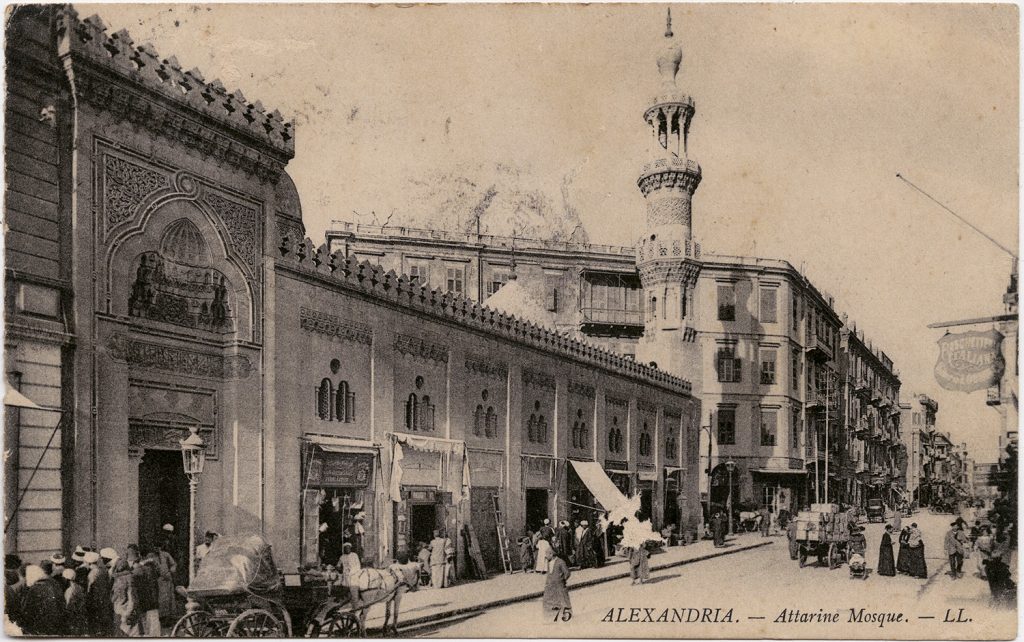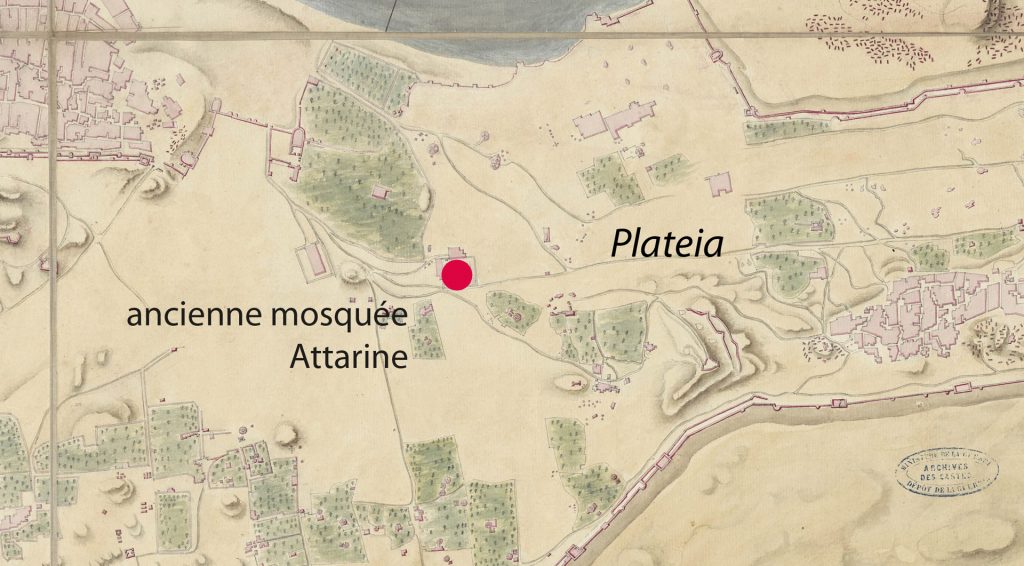Daily life
Attarine Pompey’s Pillar Tower of the Romans Cleopatra’s Needles Wardian Tomb Qaitbay Fort



These three red granite columns, some 12 to 13 metres high, were probably the remains of one of the porticoes that ran along the Plateia, the ancient thoroughfare that connected the Gate of the Sun to the east with the Gate of the Moon to the west (2). This road was known in the Middle Ages as the Mahagga and corresponds to the present-day Fouad Street (3). In the background stands a large rectangular mosque supposedly named after Saint Athanasius: it has since been replaced by the triangular Attarine Mosque. This viewpoint was chosen by numerous illustrators, including the architect Jean-Constantin Protain at the very beginning of the Egyptian Expedition.

From the « Plan of the city and harbours of Alexandria ». Watercolour, Louis-Jacques Bourgeois, circa 1799, 1/4,000
